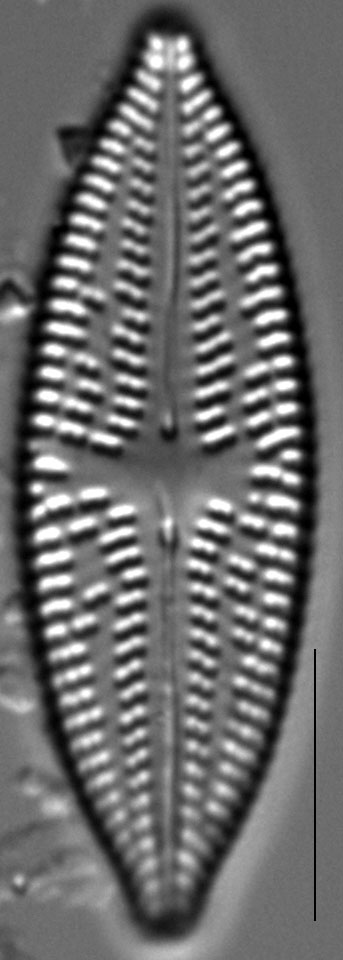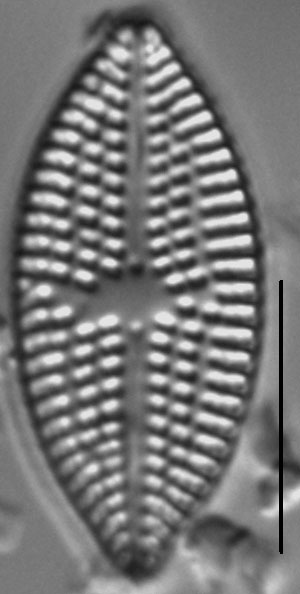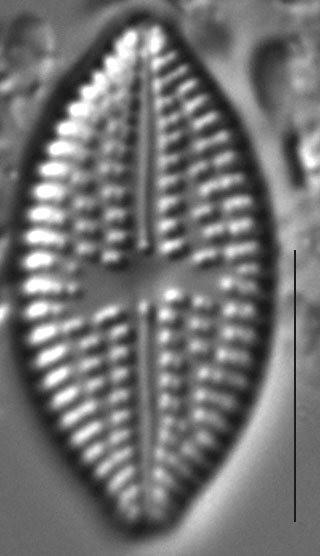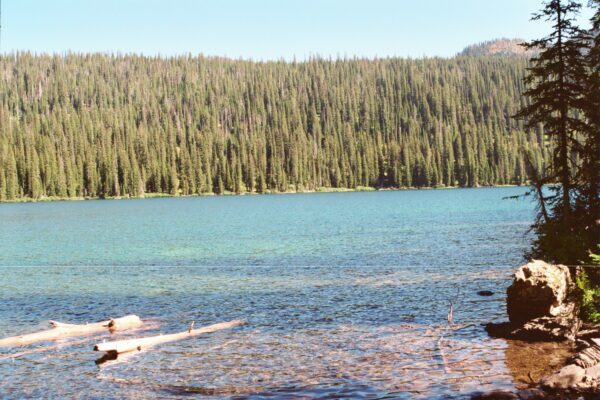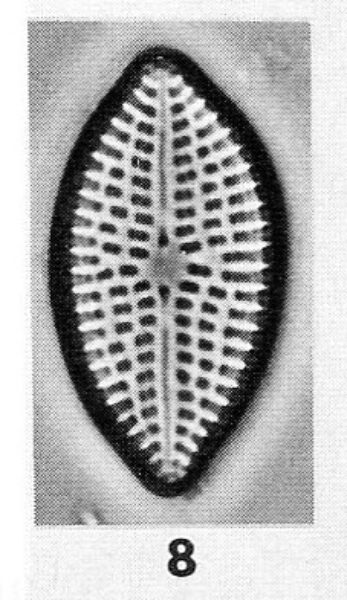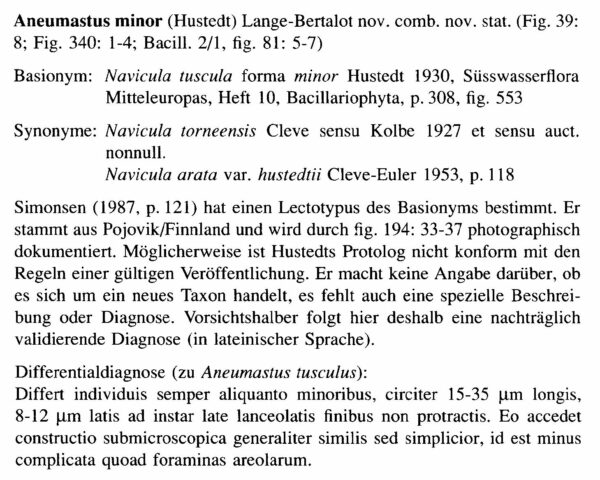Aneumastus minor
-
Category
-
Length Range18.0-34.8 µm
-
Width Range9.0-11.7 µm
-
Striae in 10 µm12-14
-
SynonymsNavicula tuscula f. minor Hust. 1930
Aneumastus tusculus f. minor (Hust.) Bukht. 1995
Aneumastus tuscula f. minor Andresen, Stoermer and Kreis 2000
-
ContributorLoren Bahls - Dec 2012
-
ReviewerMark Edlund - Feb 2013
Identification
Description
Valves are elliptic to broadly lanceolate with acutely rounded and sometimes slightly protracted apices. Axial area is narrow and linear in small specimens to narrowly lanceolate in larger specimens. Central area is a transverse fascia delimited by 3-4 irregularly shortened striae on each side. The raphe is weakly lateral and somewhat undulate with distinctly dilated proximal ends. Striae are radiate throughout. Areolae in the central region are transapically elongate and number 8-12 in 10 µm. Areolae are secondarily aligned in 1-2 undulate longitudinal rows alternating with longitudinal hyaline areas.
Hustedt (1930) published an illustration of Navicula tuscula fo. minor without a description and thus the name is invalid. Lange-Bertalot (1993) intended to publish Aneumastus minor in as a new combination of this taxon, but instead he effectively published a new taxon.
Autecology
Aneumastus minor has been collected from mountain lakes and rivers in western Montana and from slow-moving streams on the Northwestern Great Plains. One of these sites, Big Therriault Lake (shown below) had a pH of 9.05 and a specific conductance of 176 µS/cm on the sampling date. Lange-Bertalot (2001) reports that this species prefers eutrophic, chalk-rich standing waters. Although also found in remote and relatively pristine waters, It is perhaps the most tolerant of pollution among Aneumastus species in the United States.
-
Size Range, µm3
-
Motility
-
Attachment
-
Habitat
-
Colony
-
Occurrence
-
Waterbody
- Learn more about this
Citations & Links
Citations
Links
-
Index Nominum Algarum
-
North American Diatom Ecological DatabaseNADED ID: 105007
Cite This Page
Bahls, L. (2012). Aneumastus minor. In Diatoms of North America. Retrieved April 19, 2024, from https://diatoms.org/species/aneumastus_minor
Responses
The 15 response plots show an environmental variable (x axis) against the relative abundance (y axis) of Aneumastus minor from all the stream reaches where it was present. Note that the relative abundance scale is the same on each plot. Explanation of each environmental variable and units are as follows:
ELEVATION = stream reach elevation (meters)
STRAHLER = distribution plot of the Strahler Stream Order
SLOPE = stream reach gradient (degrees)
W1_HALL = an index that is a measure of streamside (riparian) human activity that ranges from 0 - 10, with a value of 0 indicating of minimal disturbance to a value of 10 indicating severe disturbance.
PHSTVL = pH measured in a sealed syringe sample (pH units)
log_COND = log concentration of specific conductivity (µS/cm)
log_PTL = log concentration of total phosphorus (µg/L)
log_NO3 = log concentration of nitrate (µeq/L)
log_DOC = log concentration of dissolved organic carbon (mg/L)
log_SIO2 = log concentration of silicon (mg/L)
log_NA = log concentration of sodium (µeq/L)
log_HCO3 = log concentration of the bicarbonate ion (µeq/L)
EMBED = percent of the stream substrate that is embedded by sand and fine sediment
log_TURBIDITY = log of turbidity, a measure of cloudiness of water, in nephelometric turbidity units (NTU).
DISTOT = an index of total human disturbance in the watershed that ranges from 1 - 100, with a value of 0 indicating of minimal disturbance to a value of 100 indicating severe disturbance.
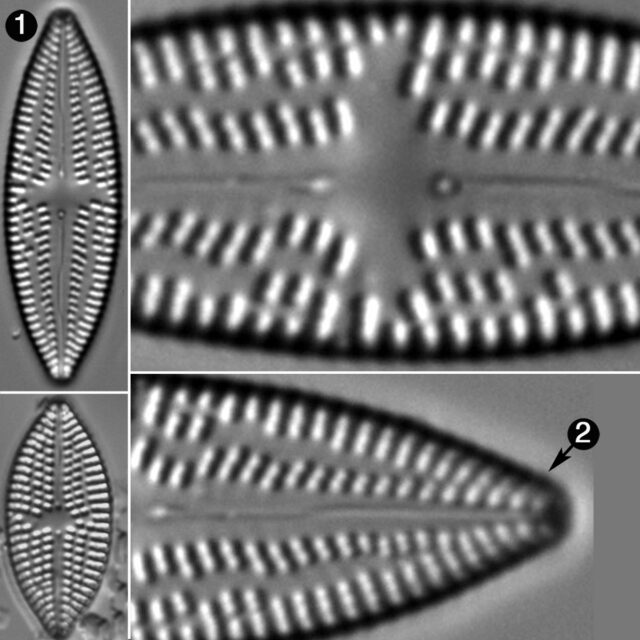
Aneumastus minor
- Valves elliptic to broadly lanceolate
- Apices acute, with blunt ends
Aneumastus minor has small elliptic, to broadly lanceolate, valves. Valve length is less than 35 µm. Apices are acute with either unprotracted or weakly protracted blunt ends.
 Diatoms of North America
Diatoms of North America
